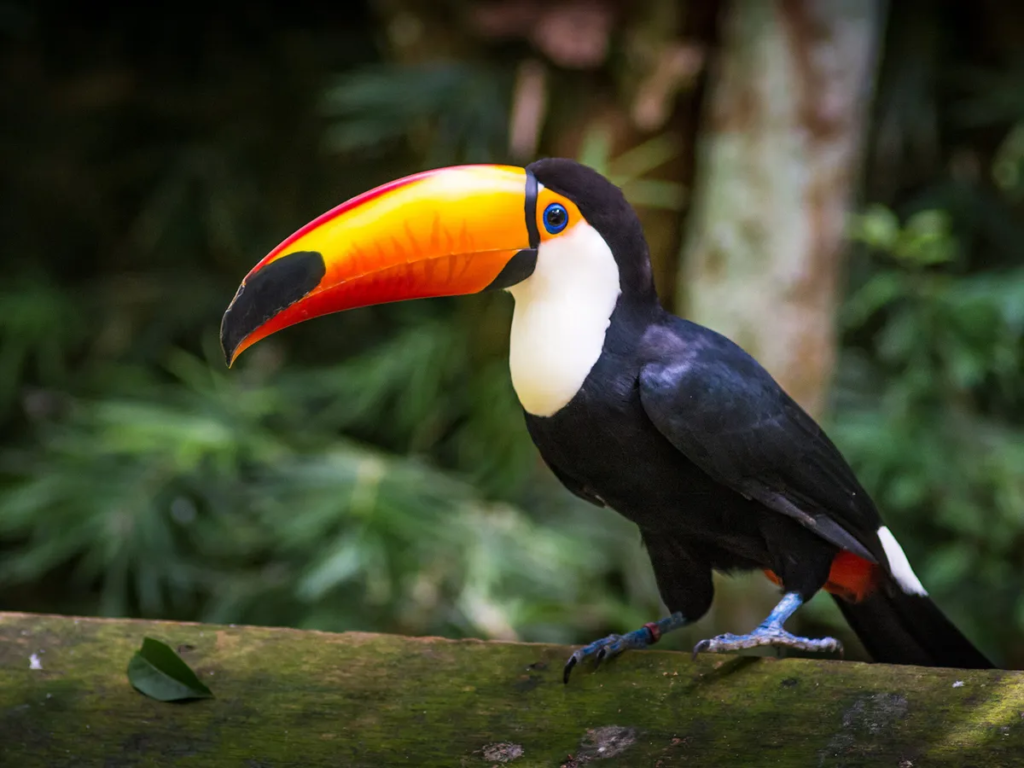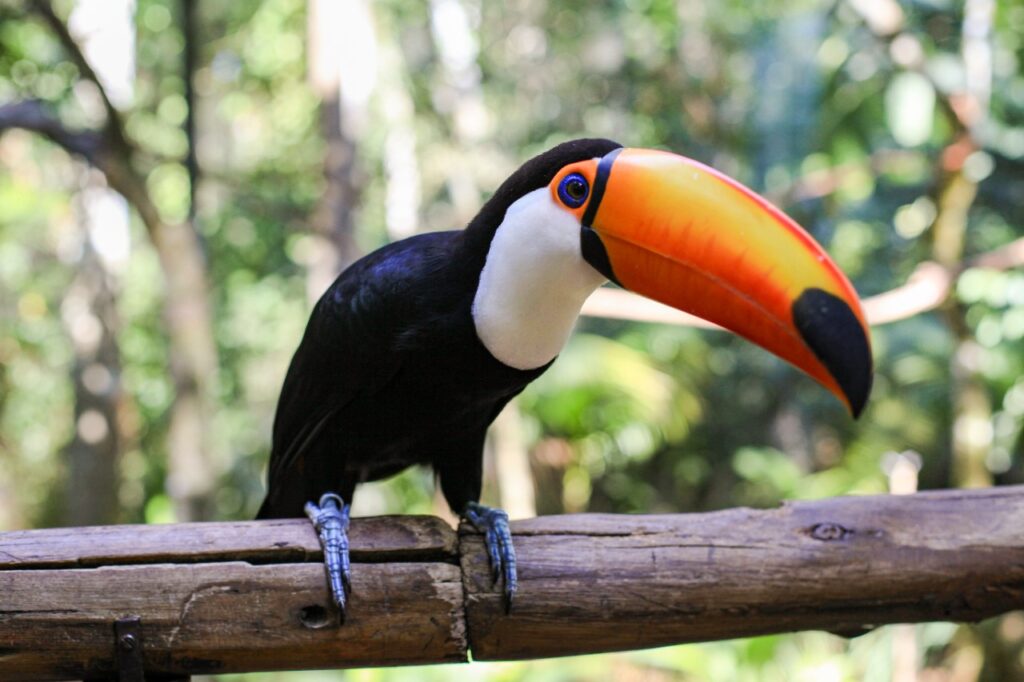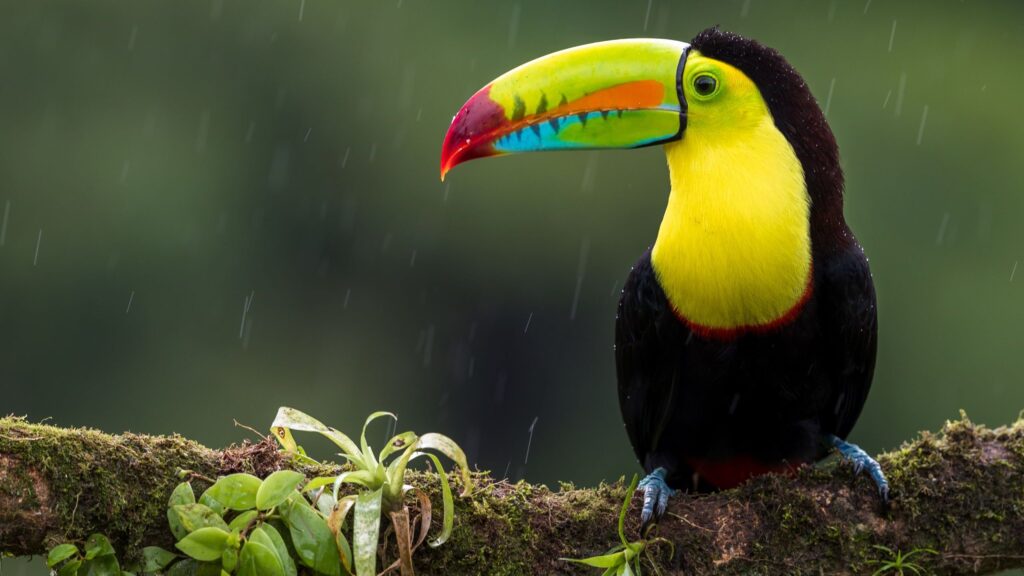Table of Contents
ToggleIntroduction

With their vibrant plumage and iconic large bills, Toucans are some of the most captivating and recognizable birds in the avian world. These charismatic creatures have captured people’s imaginations across cultures and even made their way into popular media, becoming symbols of tropical ecosystems and exotic beauty.
Taxonomy And Classification
Toucans belong to the family Ramphastidae, a distinct group of birds known for their brightly colored bills and striking appearances. Within the Animal Kingdom, they fall under the class Aves, sharing their classification with all birds.
The Ramphastidae family is further divided into multiple genera, each containing different species of toucans with unique characteristics and distributions. This diverse toucan diversity highlights their adaptability to various environments within their preferred tropical and subtropical habitats.
Physical Characteristics
One of the most remarkable features of toucans is their large, colorful bills. These bills are made of lightweight keratin and come in various sizes and hues, ranging from vibrant oranges and reds to greens and blues.
Despite their size, toucans’ bills are relatively lightweight, making flying and navigating their forest habitats easier. The bill’s intricate structure also regulates the bird’s body temperature by radiating excess heat.
Toucans are typically medium-sized birds, with a body length of about 20 to 25 inches and a wingspan of 6 to 10 inches. Their plumage is characterized by various colors, including black, white, yellow, and red. This colorful display serves multiple purposes, from attracting mates to providing camouflage within the lush vegetation of their habitat.
Habitat And Distribution
Toucans are primarily found in the tropical and subtropical regions of Central and South America. Their habitat preferences range from rainforests and tropical woodlands to cloud forests and montane areas. They are adapted for an arboreal lifestyle, spending much of their time in the trees and using their powerful bills and claws to move through the dense vegetation.
The geographic distribution of toucan species varies across different countries and ecosystems. From the iconic Keel-billed Toucan found in Central America to the Toco Toucan of South America, these birds have adapted to thrive in diverse environments.
Feeding And Diet

Toucans are primarily frugivorous, which means they predominantly feed on fruits. Their specialized bills allow them to pluck and manipulate fruits from branches, and their broad diet includes a variety of fruits from different tree species. In addition to fruits, toucans supplement their diet with insects, small vertebrates, and even the occasional eggs and nestlings of other birds.
One of the fascinating ecological roles of toucans is their contribution to seed dispersal. Consuming a wide range of fruits, they help spread plant seeds throughout their habitat, promoting forest regeneration and diversity. This mutualistic relationship between toucans and plants showcases the importance of their role within their ecosystems.
Social Behavior And Communication
Toucans are social birds that often gather in small groups or flocks. These social interactions are crucial in their daily lives, from foraging for food to engaging in play behavior. Communication among toucans involves a combination of vocalizations, bill-clicking, and body language. Their calls range from loud croaks to softer, melodic notes that vary in pitch and duration, maintaining contact within the group and signaling potential dangers.
Reproduction And Nesting
Depending on the species and geographic location, toucans exhibit various behaviors during their breeding season. Courtship rituals often involve displays of affection, bill-touching, and synchronized movements. Once a pair forms a bond, they work together to find a suitable nesting site, usually a tree hollow or cavity.
Female toucans lay their eggs within these cavities, which protect them from predators and the elements. Both parents take turns incubating the eggs and caring for the nestlings. After hatching, the young toucans are born blind and naked, requiring constant care and feeding from their parents until they are ready to fledge and leave the nest.
Evolution And Adaptations

Toucans have evolved unique adaptations that contribute to their survival in their natural habitats. One of the most notable features is their large bill. Contrary to its size, the account is lightweight due to its hollow structure, making it more manageable for toucans to fly and maneuver.
While the exact function of the bill’s size and colors is still debated among scientists, it likely serves multiple purposes, including thermoregulation, attracting mates, and reaching fruit in high tree branches.
Another adaptation is their zygodactyl feet, where two toes point forward and two point backward. This foot structure gives toucans excellent grasping abilities, allowing them to perch securely on branches and manipulate objects with their bills.
Cultural Significance And Conservation
Toucans have left a mark on cultures across their native regions. In indigenous traditions, they are often revered as symbols of vitality, fertility, and even divine connection. Beyond cultural significance, toucans have appeared in art, literature, and media, further solidifying their place in the collective imagination.
However, like many tropical species, toucans face conservation challenges due to habitat loss, deforestation, and illegal pet trade. The destruction of their habitats disrupts their ability to find food, nesting sites, and suitable places to raise their young.
Additionally, the popularity of toucans as exotic pets has led to population declines in the wild. Conservation efforts are vital to protect their habitats, regulate the pet trade, and raise awareness about preserving these charismatic birds.
Research And Scientific Importance
Toucans play a significant role in scientific research, offering insights into avian evolution, ecology, and behavior. Their specialized bill structure, unique feeding habits, and intricate social interactions make them intriguing subjects for ornithologists and ecologists. Studying toucans contributes to our understanding of how birds adapt to their environments, engage in complex social behaviors, and maintain the health of their ecosystems.
Conclusion
Toucans are not just exotic creatures with striking appearances; they are essential components of the intricate tapestry of tropical ecosystems. Their colorful plumage, unique bill adaptations, and social behaviors make them fascinating subjects of study and admiration. As we continue to uncover their ecological significance and the challenges they face, we must appreciate and protect these iconic birds and the habitats they call home. Through conservation efforts, research, and education, we can ensure that toucans continue to thrive in the wild and inspire future generations to appreciate the beauty and diversity of the natural world.







